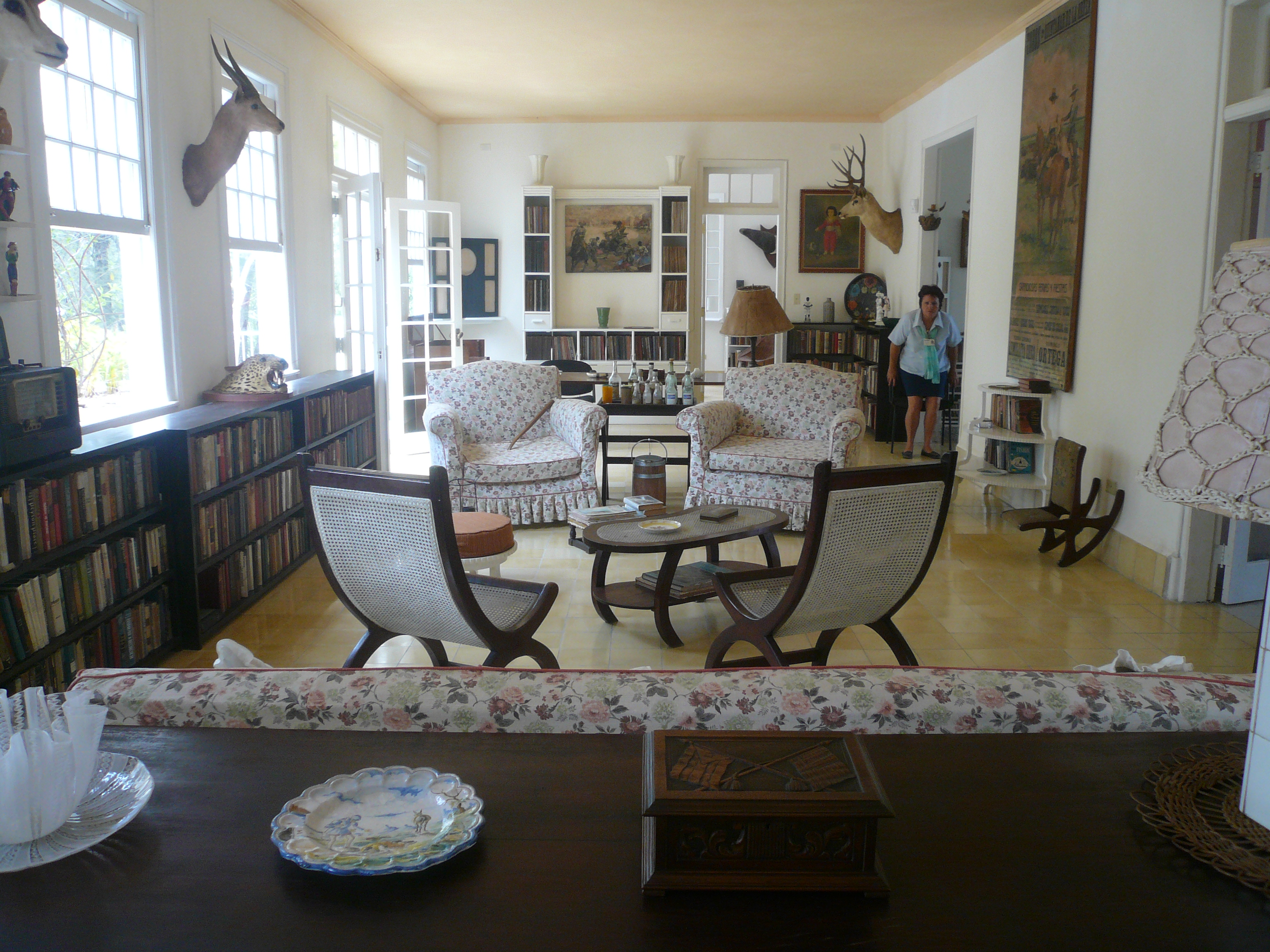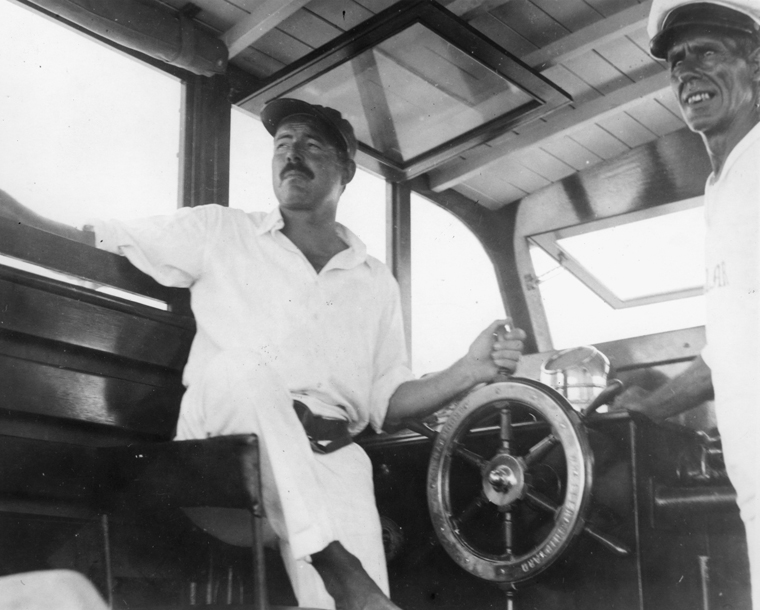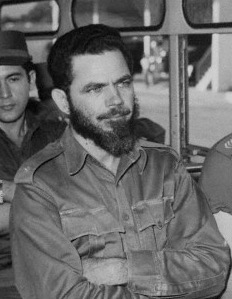|
Finca Vigía
Finca Vigía (, ''Lookout Farm'') is a house in San Francisco de Paula Ward in Havana, Cuba which was once the residence of Ernest Hemingway. Like Hemingway's Key West home, it is now a museum. The building was constructed in 1886. History of the property The house was built in 1886 by Catalan architect Miguel Pascual y Baguer on a hill about east of Havana. From the back veranda and the adjacent tower one has an excellent view of downtown Havana. The Hemingway family Hemingway lived in the house from mid-1939 to 1960, first renting it, and then buying it in December 1940 after he married Martha Gellhorn, his third wife. Gellhorn, who had come to Cuba to be with Hemingway, decided that she did not want to live in the small room he rented at the Hotel Ambos Mundos. She found the property for which Hemingway paid $12,500. The ''finca'' at the time consisted of with a farmhouse. While at ''Finca Vigía,'' Hemingway wrote much of ''For Whom the Bell Tolls'', a novel of the ... [...More Info...] [...Related Items...] OR: [Wikipedia] [Google] [Baidu] |
San Miguel Del Padrón
San Miguel del Padrón is one of the 15 municipalities/boroughs (''municipios'' in Spanish) and one of the 4 subdivisions into which the city of Havana, Cuba is divided. It is on Havana's south-eastern outskirts, stretching from Ciudad Mar to Diezmero and from Reparto Mañana to Caballo Blanco. Overview This vast demographic area was unpopulated in the late 1940s, with small pockets of wealthy and land owners. It became heavily populated during the early 1960s with the emergence of Corea (name given to a stretch of terrain clandestinely occupied by the homeless after being evicted from the main city areas) and new houses along the main street (Calzada de San Miguel). By the mid 1960s the town became administratively adjacent to Guanabacoa. San Miguel has been notorious for musicians, professional dancers and afro Cuban religious practitioners (Santería, Lukumi, Palo). During the early 1970s it was judicially declared one of the most troublesome towns in Havana due to a high deg ... [...More Info...] [...Related Items...] OR: [Wikipedia] [Google] [Baidu] |
Pilar (boat)
Ernest Hemingway owned a fishing boat named ''Pilar''. It was acquired in April 1934 from Wheeler Shipbuilding in Brooklyn, New York, for $7,495. "Pilar" was a nickname for Hemingway's second wife, Pauline, and also the name of the woman leader of the partisan band in his 1940 novel of the Spanish Civil War, ''For Whom the Bell Tolls''. Hemingway regularly fished off the boat in the waters of Key West, Florida, Marquesas Keys, and the Gulf Stream off the Cuban coast. He made three trips with the boat to the Bimini islands, wherein his fishing, drinking, and fighting exploits drew much attention and remain part of the islands' history. In addition to fishing trips on ''Pilar'', Hemingway contributed to scientific research, including collaboration with the Smithsonian Institution. Several of Hemingway's books were influenced by time spent on the boat, most notably, ''The Old Man and the Sea'' (1953) and '' Islands in the Stream'' (1970). The yacht also inspired the name of Playa P ... [...More Info...] [...Related Items...] OR: [Wikipedia] [Google] [Baidu] |
World Monuments Fund
World Monuments Fund (WMF) is a private, international, non-profit organization dedicated to the preservation of historic architecture and cultural heritage sites around the world through fieldwork, advocacy, grantmaking, education, and training. Founded in 1965, WMF is headquartered in New York, and has offices and affiliates around the world, including Cambodia, France, Peru, Portugal, Spain, and the United Kingdom. In addition to hands-on management, the affiliates identify, develop, and manage projects, negotiate local partnerships, and attract local support to complement funds provided by donors. History International Fund for Monuments (1965–1984) The ''International Fund for Monuments'' (IFM) was an organization created by Colonel James A. Gray (1909–1994) after his retirement from the U.S. Army in 1960. Gray had conceived of a visionary project to arrest the settlement of the Leaning Tower of Pisa by freezing the soil underneath, and formed the organization in 196 ... [...More Info...] [...Related Items...] OR: [Wikipedia] [Google] [Baidu] |
National Trust For Historic Preservation
The National Trust for Historic Preservation is a privately funded, nonprofit organization based in Washington, D.C., that works in the field of historic preservation in the United States. The member-supported organization was founded in 1949 by congressional charter to support the preservation of America’s diverse historic buildings, neighborhoods, and heritage through its programs, resources, and advocacy. Overview The National Trust for Historic Preservation aims to empower local preservationists by providing leadership to save and revitalize America's historic places, and by working on both national policies as well as local preservation campaigns through its network of field offices and preservation partners, including the National Park Service, State Historic Preservation Offices, and local preservation groups. The National Trust is headquartered in Washington, D.C., with field offices in Atlanta, Chicago, Houston, Denver, New York City, Los Angeles, San Francisco, an ... [...More Info...] [...Related Items...] OR: [Wikipedia] [Google] [Baidu] |
Ernest Hemingway's Home In Havana, Cuba LCCN2010638847
Ernest is a given name derived from Germanic word ''ernst'', meaning "serious". Notable people and fictional characters with the name include: People * Archduke Ernest of Austria (1553–1595), son of Maximilian II, Holy Roman Emperor * Ernest, Margrave of Austria (1027–1075) *Ernest, Duke of Bavaria (1373–1438) * Ernest, Duke of Opava (c. 1415–1464) *Ernest, Margrave of Baden-Durlach (1482–1553) *Ernest, Landgrave of Hesse-Rheinfels (1623–1693) *Ernest Augustus, Elector of Brunswick-Lüneburg (1629–1698) *Ernest, Count of Stolberg-Ilsenburg (1650–1710) * Ernest Augustus, King of Hanover (1771–1851), son of King George III of Great Britain *Ernest II, Duke of Saxe-Coburg and Gotha (1818–1893), sovereign duke of the Duchy of Saxe-Coburg and Gotha *Ernest Augustus, Crown Prince of Hanover (1845–1923) *Ernest, Landgrave of Hesse-Philippsthal (1846–1925) *Ernest Augustus, Prince of Hanover (1914–1987) *Prince Ernst August of Hanover (born 1954) * Prince Erns ... [...More Info...] [...Related Items...] OR: [Wikipedia] [Google] [Baidu] |
Real Property
In English common law, real property, real estate, immovable property or, solely in the US and Canada, realty, is land which is the property of some person and all structures (also called improvements or fixtures) integrated with or affixed to the land, including crops, buildings, machinery, wells, dams, ponds, mines, canals, and roads, among other things. The term is historic, arising from the now-discontinued form of action, which distinguished between real property disputes and personal property disputes. Personal property, or personalty, was, and continues to be, all property that is not real property. In countries with personal ownership of real property, civil law protects the status of real property in real-estate markets, where estate agents work in the market of buying and selling real estate. Scottish civil law calls real property "heritable property", and in French-based law, it is called ''immobilier'' ("immovable property"). Historical background The word " ... [...More Info...] [...Related Items...] OR: [Wikipedia] [Google] [Baidu] |
Bay Of Pigs Invasion
The Bay of Pigs Invasion (, sometimes called ''Invasión de Playa Girón'' or ''Batalla de Playa Girón'' after the Playa Girón) was a failed military landing operation on the southwestern coast of Cuba in 1961 by Cuban exiles, covertly financed and directed by the United States. It was aimed at overthrowing Fidel Castro's communist government. The operation took place at the height of the Cold War, and its failure influenced relations between Cuba, the United States, and the Soviet Union. In December 1958, American ally General Fulgencio Batista was deposed by Castro's 26th of July Movement during the Cuban Revolution. Castro nationalized American businesses—including banks, oil refineries, and sugar and coffee plantations—then severed Cuba's formerly close relations with the United States and reached out to its Cold War rival, the Soviet Union. The Central Intelligence Agency (CIA) began planning the overthrow of Castro, which U.S. President Dwight D. Eisenhower appr ... [...More Info...] [...Related Items...] OR: [Wikipedia] [Google] [Baidu] |
Cuban Revolution
The Cuban Revolution ( es, Revolución Cubana) was carried out after the 1952 Cuban coup d'état which placed Fulgencio Batista as head of state and the failed mass strike in opposition that followed. After failing to contest Batista in court, Fidel Castro organized an armed attack on the Cuban military's Moncada Barracks. The rebels were arrested and while in prison formed the 26th of July Movement. After gaining amnesty the M-26-7 rebels organized an expedition from Mexico on the Granma yacht to invade Cuba. In the following years the M-26-7 rebel army would slowly defeat the Cuban army in the countryside, while its urban wing would engage in sabotage and rebel army recruitment. Over time the originally critical and ambivalent Popular Socialist Party would come to support the 26th of July Movement in late 1958. By the time the rebels were to oust Batista the revolution was being driven by the Popular Socialist Party, 26th of July Movement, and the Directorio Revoluci ... [...More Info...] [...Related Items...] OR: [Wikipedia] [Google] [Baidu] |
Polydactyl
Polydactyly or polydactylism (), also known as hyperdactyly, is an anomaly in humans and animals resulting in supernumerary fingers and/or toes. Polydactyly is the opposite of oligodactyly (fewer fingers or toes). Signs and symptoms In humans/animals this condition can present itself on one or both hands or feet. The extra digit is usually a small piece of soft tissue that can be removed. Occasionally it contains bone without joints; rarely it may be a complete functioning digit. The extra digit is most common on the ulnar (little finger) side of the hand, less common on the radial ( thumb) side, and very rarely within the middle three digits. These are respectively known as postaxial (little finger), preaxial (thumb), and central (ring, middle, index fingers) polydactyly. The extra digit is most commonly an abnormal fork in an existing digit, or it may rarely originate at the wrist as a normal digit does. The incidence of congenital deformities in newborns is approximately 2% ... [...More Info...] [...Related Items...] OR: [Wikipedia] [Google] [Baidu] |
Key West
Key West ( es, Cayo Hueso) is an island in the Straits of Florida, within the U.S. state of Florida. Together with all or parts of the separate islands of Dredgers Key, Fleming Key, Sunset Key, and the northern part of Stock Island, it constitutes the City of Key West. The Island of Key West is about long and wide, with a total land area of . It lies at the southernmost end of U.S. Route 1, the longest north–south road in the United States. Key West is about north of Cuba at their closest points. It is also southwest of Miami by air, about by road, and north-northeast of Havana. The City of Key West is the county seat of Monroe County, which includes a majority of the Florida Keys and part of the Everglades. The total land area of the city is . The official city motto is "One Human Family". Key West is the southernmost city in the contiguous United States and the westernmost island connected by highway in the Florida Keys. Duval Street, its main street, is in le ... [...More Info...] [...Related Items...] OR: [Wikipedia] [Google] [Baidu] |
The Complete Short Stories Of Ernest Hemingway
''The Complete Short Stories of Ernest Hemingway: The Finca Vigía Edition'', is a posthumous collection of Ernest Hemingway's (July 21, 1899 – July 2, 1961) short fiction, published in 1987. It contains the classic '' First Forty-Nine Stories'' as well as 21 other stories and a foreword by his sons. Only a small handful of stories published during Hemingway's lifetime are not included in ''The First Forty-Nine''. Five stories were written concerning the Spanish Civil War: "The Denunciation", "The Butterfly and the Tank", "Night Before Battle", "Under The Ridge", and "Nobody Ever Dies". Excepting "Nobody Ever Dies", these stories were collected in a posthumous 1969 volume with his play, entitled ''The Fifth Column and Four Stories of the Spanish Civil War''. Chicote's bar and the Hotel Florida in Madrid are recurrent settings in these stories. In March 1951, ''Holiday'' magazine published two of Hemingway's short children's stories, "The Good Lion" and "The Faithful Bull". Tw ... [...More Info...] [...Related Items...] OR: [Wikipedia] [Google] [Baidu] |







